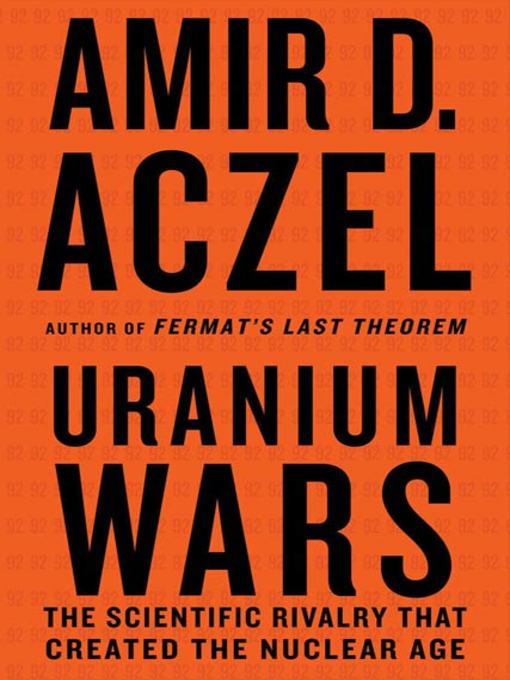Called "one of our best science popularizers" by Publishers Weekly, Amir D. Aczel tackles the cause of one of last century's most destructive events—the scientific discovery of nuclear power.
Drawing on his rich storytelling skills, Aczel presents the fascinating and suspenseful story of the scientists who first uncovered the potential of uranium. Uranium Wars takes the reader on a whirlwind tour of 1920s Europe where the scientific elite of the day were embroiled in a fierce rivalry to achieve nuclear fission. Leading us to an understanding of both the processes that take place inside a uranium nucleus and its destructive power are the brilliant men and women at the heart of the race—mammoth figures such as Marie Curie, Enrico Fermi, and Lise Meitner.
Enmeshed in the story of scientific intrigue is the complex and ongoing story of uranium itself, which Aczel presents as a dynamic, dual natured force, capable of providing both abundant usable energy and generating unfathomable destructive power. From the nuclear programs in the Middle East to plans for nuclear reactors at home, the element uranium is never far from today's headlines.
- Available now
- Sleuth Out a New Mystery Series
- Most popular
- Found at Airport Bookstores
- Not Such a Happy Home: Domestic thrillers & haunted homes
- Try something different
- Perpetually Popular Nonfiction
- Quirky and Heartfelt Reads
- Read Banned Books!
- See all ebooks collections
- Audiobooks for the Drive to Las Vegas
- Audiobooks for the Drive to Palm Springs
- Audiobooks for the Drive to San Francisco
- Available now
- Audiobooks for the Whole Family
- Most Popular Audio Between 1 and 3 Hours
- New audiobook additions
- Listen While You Run: Audiobooks for Workouts
- Try something different
- Most popular
- See all audiobooks collections



